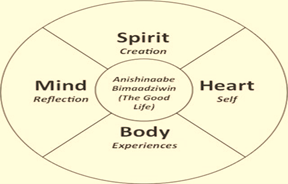
This blog is an outlet for individuals to discuss and to provide possible solutions for mental health issues in our community. The topic of Black and Brown students’ race- based traumatic events continues to erode the consciousness and mental health of our students. As a former school administrator in a school district of predominately Black and Brown students and mostly white educators. I found it challenging to bridge the gap among the staff and our students to address the effects and impact of trauma, racial issues, and to bring understanding and cohesiveness within our school.
Traumatic events involve (1) experiencing a serious injury to oneself or witnessing a serious injury to or the death of someone else; (2) facing imminent threats of serious injury or death to oneself or others; or (3) experiencing a violation of personal physical integrity. Child traumatic stress occurs when children’s exposure to traumatic events overwhelms their ability to cope with what they have experienced. Traumatic events can have a wide-ranging impact on children’s functioning and can cause increased anxiety, depression, symptoms of posttraumatic stress disorder, difficulty managing relationships, and, most important for educators, difficulty with school and learning.
Historical trauma is a form of trauma that impacts entire communities. It refers to cumulative emotional and psychological wounding, as a result of group traumatic experiences, transmitted across generations within a community (SAMHSA, 2016; Yehuda et al., 2016). This type of trauma is often associated with racial and ethnic population groups in the US who have suffered major intergenerational losses and assaults on their culture and well-being. The legacies from enslavement of African Americans, displacement and murder of American Indians, and Jews who endured the Holocaust have been transferred to current descendants of these groups and others.
Race-related trauma is defined as exposure to traumatic events due to an individual’s race (Bryant-Davis & Ocampo, 2005). Specifically, race-related trauma is a byproduct of racism when racism disrupts the psychological, emotional and physical well-being of children, adolescents, and adults.
The longstanding systemic history of racism within this country also contributes to this cumulative traumatic effect. The various types of stressors that people of color experience can be categorized as:
Intergenerational stressors:
The traumatic effects of racism, whether it be specific events or systemic structures, are often passed down through generations. This is the result of the United States’ history of colonialism and slavery. The experiences and stories that are shared often pass along the emotional pain associated with them either consciously or unconsciously. An example of this is how many Black and Brown parents have conversations with their children where they explain how to interact with police as a person of color.
Vicarious stressors:
This includes the impacts of living in a systemically racist society and indirectly experiencing acts of racism. Even when individuals are not directly impacted by events, they can experience the same psychological and physiological effects on the nervous system. For example, one of the most common means by which people of color can be triggered is by witnessing hate crimes, racial microaggressions, or other direct racist encounters that are recorded and made constantly available by social media.
Direct stressors:
These are the direct impacts of being in a systemically racist society or directly experiencing an individual attack as a result of race. Examples of this include hate crimes, being racially profiled or heavily policed, housing discrimination, unfair treatment in schools. Furthermore, communities of color have had previous negative experiences with “helping systems,” such as law enforcement, social and child protective services, mental and physical health care providers, and school systems, and that these encounters can result in significant distrust and be distressing for some students (Vaught & Castagno, 2008; Sotero, 2006) or a culmination of microaggressions.
Racism proceeds to disrupt a young person’s sense of belonging, their relationship with others, and their access to resources. Using the public school system as a backdrop, the race-related trauma framework aims to identify how schools exercise power and control against black and brown children and adolescents through alienation, discriminatory policies and practices, and psychological violence. Teachers and school administrators often perceive Black and Brown children as being older, more aggressive and more culpable, even when they exhibit the same developmentally-appropriate behaviors as their white peers — a phenomenon known as “adultification.” These beliefs and other biases against and beliefs about Black and Brown students and families, can lead to the disproportionate punishment, criminalization and harsh treatment of Black and Brown students, pushing them out of their classrooms into the school-to-prison pipeline and erecting unnecessary barriers to their success. They are more likely to attend schools that are underfunded, low student expectations (academic) by teachers, and often do not have access to ethnic studies courses, and culturally-sustaining school climates. Research shows this is true for both Black and Brown boys/ Black and Brown girls, who are more likely to be suspended, sent to alternative schools and have contact with school police than their peers. These factors can impact Black and Brown students’ connections to and ability to thrive in their schools.
Students of color thoughts and incidents.
“[Teachers are a] lot sterner with students of color. Well, mainly Black and Latinx students.”
– 11-year-old student
“Teacher cut a child’s hair in front of the classroom because she was frustrated”
– 7-year-old student
“Black kids, in school… always act to [teachers’] expectations. You can’t act normal.”
– 12-year-old student
“A Black girl was arrested in front of her class and taken into custody for not giving a drawing that disturbed a white parent.”
– 10-year-old student
“A student not able to walk across the stage at his graduation due to length/style of his hair.”
– 17-year-old student
Healing racial trauma in students can be sectioned into four equal phases: See Diagram:

(1) Adopting stress reduction practices, (2) advocacy through youth-adult partnerships, (3) teach the historical foundations of racism for people of color (4) promote racial justice initiatives for reform.
Adopting stress reduction practices, such as mindfulness, in schools to use with youth, teachers, and other school personnel can reduce tension and mitigate conflict. The work of the Holistic Life Foundation shows that mindfulness reduces stress-related behaviors by using meditative practices to improve attention, reduce stress, and increase self-regulation among adults and children. If we identify ways to adopt stress reduction practices in school, we can potentially reduce racial tensions.
Advocacy through youth-adult partnerships centers on improving community and civic engagement among youth. These partnerships can link youth to social support and provide opportunities for them to address racism and participate in decision-making in school. These types of activities can improve school engagement and build several skills for youth, such as social competence and self-efficacy (Zeldin, Christens, & Powers, 2013).
The Historical Foundations of Racism can be taught as a pathway to show transparency about systemic racism and oppression for people color. Students should be able use their higher- level thinking skills about institutionalized racial disadvantages and systemic racial inequality. This will open the lines of communication to engage in dialogue about how America’s history has influenced our society and institutions today.
Racial Justice is the systematic fair treatment of people of all races, resulting in equitable opportunities and outcomes for all. Racial justice initiatives address structural and systemic changes to ensure equal access to opportunities, eliminate disparities, and advance racial equity—thus ensuring that all people, regardless of their race, can prosper and reach their full potential. Racial justice and equity are not achieved by the mere absence of racial discrimination or the perceived absence of harmful racial bias, but rather through deliberate action to dismantle problematic and build positively transformational systems – action must be carried through with the conviction, policies, laws, commitment and dedication of advocates.
Schools are a place for us to nurture the minds of future generations, and we must continue to help students learn to read and write and think. But we must not ignore the impact that this type of trauma can have on students’ long-term well-being and educational attainment. We must also help our children learn how to process the immense emotional and mental hardships they have experienced.
We want to hear from you! Send comments you want to share with us to Blog-WISE – Initiative for Stigma Elimination.
Our next WISE online Coalition Meeting entitled, “Addressing Stigma at the Intersection of Addiction and Mental Health” will be on Thursday, February 15, 2022, from 9:30am-11:30am.
Here are some references and resources you could use to further your understanding about the effects of racism and trauma on Black and Brown students’ mental health.
Brown, T. M. (2007). Lost and turned out: Academic, social, and emotional experiences of students excluded from school. Urban Education, 42 (5), 432 –455.
Bryant-Davis, T., & Ocampo, C. (2005). Racist incident-based trauma. The Counseling Psychologist, 33 (4), 479-500.
Ferguson, R. F. (2003). Teachers’ perceptions and expectations and the Black-White test score gap. Urban Education, 38, 460–507.
Henderson, D. (2017). Race-Related Trauma in the Public Education System. Psychology Today.
National Child Traumatic Stress Network, Justice Consortium, Schools Committee, and Culture Consortium. (2017). Addressing Race and Trauma in the Classroom: A Resource for Educators. Los Angeles, CA, and Durham, NC: National Center for Child Traumatic Stress.
Substance Abuse and Mental Health Services Administration (SAMHSA) (2016). Understanding historical trauma when responding to an event in Indian country. Retrieved from http://store.samhsa.gov/shin/content/SMA14- 4866/SMA14-4866.pdf
Zeldin, S., Christens, B. D., & Powers, J. L. (2013). The psychology and practice of youth-adult partnership: Bridging generations for youth development and community change. American Journal of Community Psychology, 51, 385–397. doi: 10.1007/s10464-012-9558-y


Dr. Ricardo Anderson is a Certified Recovery Support Specialist (CRSS), a co-facilitator of a recovery group for all types of addictions, serves on the Executive Board for WISE as well as the Leadership Board for Peer Professionals. He is an advocate to help eliminate the stigma of mental health among individuals, the community and people of color.